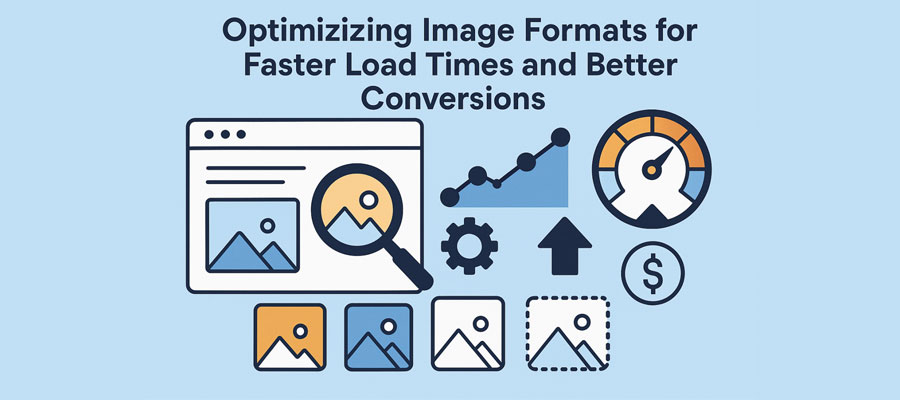Introduction
In digital year, a wide range of attention and competition is very strong. Last seconds in the loading time of your website the guests can edit, injury to your list. One of the reasons to ignore the slow dull websites are not optimized. Choosing the correct photo and optimizing the internet can reduce delivery time, improve the user experience, and increase the rotation. In this article, we will check how to optimize good photo format for speed and performance.
What is the main reason to describe
The photos are more than 50% of the entire Web site website. While the most important view is important to include users, they can also be the reason your website is in the future. A picture of less inclined is not reduced in your site but also suffers from your SEO degree and the more powerful of the Pental.
The main benefits of optimum of optimization:
- Quick Loading Time: The size of a small shape leads to a speedy, especially on mobile devices.
- A user experience enhanced: Quickly faster fabrics and have fun to use.
- Beave SEO: Search engine seats at the speed of the page will rate the site.
- Increased Conversions: Studies show that faster websites convert better.
Common Image Formats and Their Uses
Understanding the pros and cons of different image formats is the first step in optimization.
1. JPEG (or JPG)
- Best for: Photographs and realistic images.
- Pros: Compressed file sizes with minimal quality loss.
- Cons: not good for photos and text or understanding.
2. PNG
- Good for: photos and detailed light, brand and photos.
- Power: Depreciation of loss and support.
- Cons: File size is more than jpeg.
3. GIF
- Best for: Simple animations.
- Pros: Supports animation and transparency.
- Cons: Limited to 256 colors, not suitable for complex images.
4. WebP
- Best for: Web use where performance is critical.
- Pros: Superior compression for both lossy and lossless formats, supports transparency and animation.
- Cons: Not supported by all older browsers.
5. SVG
- Good for: Significations, brands, and graphics wants to be detailed.
- Power: vector-bosed, light, and does not trust the decision.
- Cons: Not suitable for detailed photography.
Select the correct character format for speed and quality
Choosing a good format is not easy. It is based on text content, use and organization of work. The choice of good format is not easy. It is based on text content, use and organization of work.
General Guidelines:
- Use JPEG for photos to maintain good quality to the size of the file.
- Use HEIC to PNG Converter for photos who want to be completely detected or detailed. Select the website when the browser is not problematic; There is a lot of balance between quality and performance.
- Use SVG for simple graphics such as brands and symbols.
Photo Description: Deputy Depression
The combination of the file size is reduced, but not all the same is the same.
Lossy Compression:
- Removes some data permanently.
- Great for reducing file size significantly.
- Used in Jfif to jpg converter, WebP (lossy mode).
Lossless Compression:
- Preserves all original data.
- Maintains image quality.
- Used in PNG, GIF, WebP (lossless mode).
Tips: Reduced the rest between the quality and size of the file. The quality of a small small nature can be able to have the time and reduce the user experience.
Tools for Optimizing Image Formats
Here are some powerful tools and platforms to help you optimize image formats efficiently:
Online Tools:
- TinyPNG / TinyJPG: Compress PNG and JPEG images effectively.
- Squoosh: Offers WebP conversion and fine-tuned compression settings.
- ImageOptim: Ideal for Mac users; removes unnecessary metadata.
CMS Plugins:
- Smush (WordPress): Automatically compresses and resizes images on upload.
- ShortPixel: Supports multiple formats including WebP.
- Imagify: Enables one-click compression for WordPress images.
Software:
- Adobe Photoshop: Allows for manual control over compression and export format.
- GIMP: Free and open-source alternative for image editing and optimization.
The newly logotes and HTML methods
New websites using images of the best of the correctness of the correctness of the correct device and the user’s screen degree.
Use srcset and sizes:
<img src="image.jpg"
srcset="image-small.jpg 480w,
image-medium.jpg 1024w,
image-large.jpg 1600w"
sizes="(max-width: 600px) 480px,
(max-width: 1200px) 1024px,
1600px"
alt="Optimized Image">This method ensures that smaller images are served to mobile users, improving load time and data efficiency.
Advanced Techniques: Lazy Loading and CDN Usage
Lazy Loading:
Delays loading of images that are not immediately visible on the screen. Modern browsers support the loading=”lazy” attribute.
<img src="image.jpg" loading="lazy" alt="Lazy Loaded Image">Content delivery network (CDN):
Use CDNS such as clouds, photographs or is to allow faster photos away from the nearest server. These platforms also offer automatic format conversion and compression.
Testing and Monitoring Performance
Optimizing the format format is not one job. Test your website service regularly to identify new opportunities for improvement.
Tools to Use:
- Google PageSpeed Insights
- GTmetrix
- Lighthouse (Chrome DevTools)
These tools show photos and down your site and display a better compressing format or compression techniques.
Conclusion
The photo format is an important part of the website and user experience. By choosing the correct format, trying to understand the new website, you can increase the time to increase the change. While you run a e-mail site or blog, the idea of photos must be included in your main website strategy.

